
18 minute read
Highlights from Acta Paediatrica
from Paidos 2020-01
by WebPress
DOI: 10.1111/apa.15016 NOVEMBER ISSUE
H I G H L I G H T S I N T H I S I S S U E
DIALOGIC RE ADING WA S BET TER THAN SCREEN҃BA SED STORY TELLING
Twait et al 1 evaluated what effect a 6-week dialogic reading intervention had on 16 fiveyear-old children and compared them with 16 children exposed to screen-based storytelling. They found that dialogic reading, which involves having a dialogue with the children about the text they are reading, led to neurobiological changes that indicated improved executive functions and language abilities. The same improvements were not seen in the screen-based group.
WHAT PAEDIATRICIANS NEED TO KNOW ABOUT THE GUT MICROBIOTA
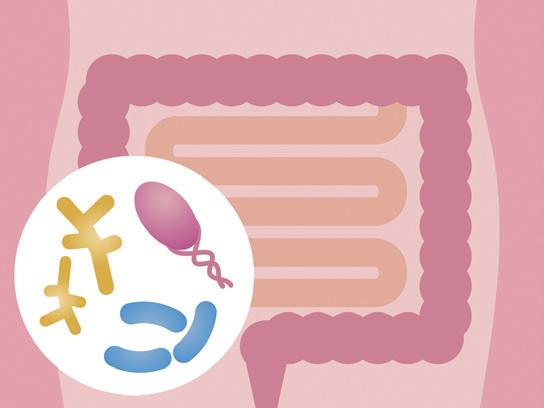
The development of the gut microbiota occurs primarily during infancy, and growing evidence has emphasised its positive role and its implications for human health. This review describes what is known about the gut microbiota in early life and highlights the factors that influence it. 2 It also looks at the potentially harmful effects gut microbiota problems can cause later in life and what paediatricians can do to modulate it. Szajewska comments on the findings. 3
FIVE҃YE AR SURVIVAL R ATES FOR MA JOR CONGENITAL ANOMALIES HAVE IMPROVED

The survival of infants with major congenital anomalies (CA) has improved in recent years. An Australian register-based study by Schneuer et al 4 showed that nine in 10 infants with major CA survived past 5 years of age, although survival rates varied across CA groups. Five-year survival was higher for children with isolated anomalies than multiple anomalies and lower for preterm than termborn infants.
NUDGING PARENTS TO ACCEPT VITAMIN K AT BIRTH

Over the last few years, there has been an increase in reported vitamin K deficiency complications, mostly in breastfed infants whose parents have refused a standard dose of vitamin K at birth. Moses et al 5 discuss why the parents refused vitamin K and suggest how they can be nudged to let their infant have this important supplement. In the accompanying editorial, Strehle describes new ways to prevent bleeding related to vitamin K deficiency in infancy. 6
PALLIATIVE C ARE STUDY E XPLORES DISCUSSIONS WITH DYING CHILDREN

All end-of-life conversations in Sweden should be documented in the country ' s register of palliative care. However, Lövgren et al 7 found that there were no register entries about such discussions for more than half of the Swedish children who died at 4-17 years in 2015-2017. The authors say that it was not possible to say whether those discussions had been conducted or not, but healthcare professionals have reported several barriers. These have included lack of communication skills, little time to prepare for discussions, feeling that patients or parents were not ready and unrealistic parental expectations.
Figures 1-5: istockphoto.com
DOI: 10.1111/apa.15051 DECEMBER ISSUE
H I G H L I G H T S I N T H I S I S S U E
HELPING ON҃C ALL PAEDIATRICIANS TO RECOGNISE AND MANAGE SE VERE PRIMARY IMMUNODEFICIENCIES
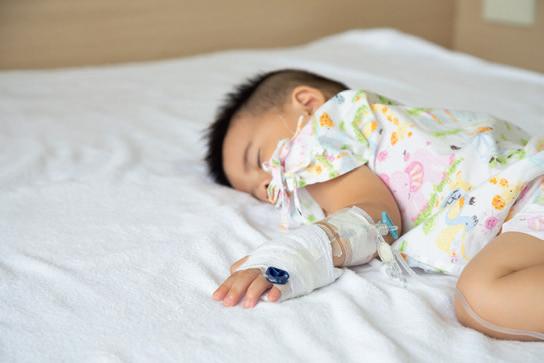
Severe primary paediatric immunodeficiency syndromes are rare and potentially fatal unless detected and treated early. Wekell et al 1 provide clinical guidance and support for on-call consultant paediatricians working in the emergency departments of secondary level hospitals on how to recognise and manage children with these conditions. Abrahamsen 2 comments on the guidelines.
THE ROLE OF NEGATIVE STRESS IN CHILDHOOD PAIN

Recurrent pain of unknown origin is a major problem in children. A review by Alfven et al 3 examines the role of negative stress in the aetiology of recurrent pain. They also explore how negative stress affects the central nervous system, with a particular focus on increased muscle tone and startle reflexes. Recurrent pain is also covered in a paper by JátivaMariño et al, 4 who report that the prevalence of functional constipation in children was unchanged after the Rome IV criteria halved the diagnosis period in Rome III.
MIGR ANT CHILDREN WITHOUT LEGAL RESIDENCY HAVE DIVERSE HE ALTHC ARE NEEDS

It is estimated that 1.9-3.8 million people live in the European Union without a valid residence and that 13% are younger than 18 years. Parellada et al 5 explored the health of undocumented migrant children in Denmark and found that they had diverse health needs, including critical conditions. The study highlights the need for enhanced awareness and attention, so that undocumented migrant children can have access to comprehensive healthcare services. Hjern and Kadir 6 comment on the findings.
NO NE WBORN SCREENING PROGR AMME FOR CYSTIC FIBROSIS LED TO DEL AYED DIAGNOSES

Newborn screening for cystic fibrosis (CF) was not implemented in Denmark, until 2016. Pedersen et al 7 describe the clinical status of patients with CF when they were diagnosed in 2010-2014, before national screening. They found that these CF diagnoses took considerably longer than in other countries that were already using newborn CF screening. Many of the Danish patients with CF diagnosed due to clinical symptoms were moderate to severe underweight or stunted at diagnosis.
CHILDREN WITH PRENATAL ALCOHOL E XPOSURE RISK VISUAL COGNITIVE IMPAIRMENTS
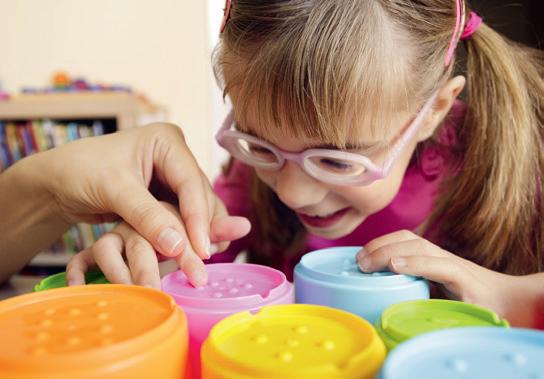
Castillo Castejón et al 8 compared 79 children adopted from Eastern Europe with matched children born in Spain. All the subjects underwent a full ophthalmological assessment and standardised tests to evaluate their visual cognitive skills. The result revealed that children adopted from Eastern Europe were at increased risk of visual perceptual disabilities, especially those with sentinel findings of foetal alcohol syndrome disorders.
Figures 1-5: istockphoto.com
H I G H L I G H T S I N T H I S I S S U E
PHYSIC AL AC TIVIT Y BRE AKS ENHANCED AC ADEMIC ACHIE VEMENT
A study by Mavilidi et al 1 showed that short physical activity breaks during maths lessons three times a week enhanced the learning behaviour of children at a mean age of nine years, compared with children who just had maths lessons. The participants were 87 Australian primary school students, and three classes were randomly assigned to just activity breaks, just maths or a combination of activity breaks and maths. Karlsson and Rosengren 2 comment on the findings.

A systematic review by Schreglmann et al 3 reports that up to 60% of the children with neonatal hypoxic-ischaemic encephalopathy (HIE), who survived without cerebral palsy, had general and, or, specific cognitive impairments. Chakkarapani 4 comments on the findings. Meanwhile, Giannakis et al 5 found wide variations in the use of therapeutic hypothermia for neonates with HIE in German hospitals. On the same topic, a Swedish study by Zaigham et al 6 reports that hypoxia with acidosis at birth was not associated with an increased risk of death or impaired neurodevelopment in extremely preterm born children when they reached 6.5 years of age.

NO A SSOCIATION BET WEEN BRE A STFEEDING AND BEING OVERWEIGHT AT THE AGE OF EIGHT
found that 90% had been breastfed, but the adjusted analyses of the BMI scores were not significantly related to breastfeeding. Readers may also be interested in the paper by Øyri et al, 8 which found that infant total cholesterol (TC) and glycated haemoglobin concentrations varied widely and that infant TC was associated with macronutrient intake and maternal TC.
GUIDELINES FOR PRE VENTING AND TRE ATING NEONATAL HYPOGLYC AEMIA IN NEWBORN INFANTS

Postnatal hypoglycaemia in newborn infants remains an important clinical problem, and prolonged periods of hypoglycaemia have been associated with poor neurodevelopmental outcomes. Wackernagel et al 9 have developed evidence-based Swedish national guidelines to optimise the prevention, diagnosis and treatment of hypoglycaemia in neonates born at 35 weeks of gestation or more.
WHAT ROLE DOES THE AMOUNT OF GLUTEN PL AY IN COELIAC DISE A SE?

Coeliac disease is a chronic immune-mediated disorder that affects the small intestine, and it occurs in genetically sensitive individuals exposed to gluten. At least three papers 10-12 published in 2019 stated that the quantity of gluten intake plays an important role in the risk of coeliac disease. But how should these results be interpreted? An editorial by Ludvigsson and Lebwohl 13 assesses the latest evidence.

Bjertnæs et al 7 examined whether breastfeeding was associated with body mass index (BMI) and the risk of overweight or obesity in a regional Norwegian cohort of 8-year-old children. They Figures: Istockphoto.com
H I G H L I G H T S I N T H I S I S S U E
FAKED ENERGY DRINK IMPROVED E XERCISE PERFORMANCE
Fanti-Oren et al asked overweight, obese and normal weight 12-yearold children to perform two treadmill exercise tests. 1 Before each test, the participants were given bottled water. During one session, they were told that they were drinking ordinary water, and during the other, they were told that the drink would probably improve their exercise performance. The liquid that was described as an energy drink, or so called information placebo, was associated with a significant effect on the fitness test results in all groups. The authors concluded that overweight and obese children may enhance their physical activity levels and energy expenditure with the proper encouragement. Ekblom comments on the findings. 2
ITALIAN GUIDELINES ON THE FIRST FEBRILE URINARY TR AC T INFEC TION HAVE BEEN UPDATED
powder, which is also a component of the common cereal milk drink called välling, could be one of the reasons behind the high incidence of type 1 diabetes in Swedish children. Erlandsson-Albertsson supports this hypothesis in a different view. 6 However, Ludvigsson says that the study provided rather weak support for intestinal inflammation, because the storage conditions described in the study would be less likely in Swedish homes. He also pointed out that animal experimental findings cannot always be extrapolated to humans. 7
E ARLY COCHLE AR IMPL ANTS LED TO MORE NATUR AL SPOKEN L ANGUAGE
Evidence suggests that cochlear implants are beneficial for language development in children with congenital hearing loss, but there has been no consensus about the ideal age for surgery. A study by Karltorp et al showed that cochlear implants before 9 months of age led to more natural spoken language development, without increased surgical risks. 8
Ammenti et al have revised the Italian recommendations for the first febrile urinary tract infection in young children. 3 Four major modifications were introduced. The method for collecting urine for culture and its interpretation were re-evaluated, and the algorithm that guides clinical decisions to proceed with voiding cystourethrography was reformulated. In addition, the suggested antibiotics were revised and further restrictions of the use of antibiotic prophylaxis were recommended. Tullus comments on the new guidelines. 4
IS THERE A LINK BET WEEN COWS ' MILK OR SKIMMED MILK POWDER AND T YPE 1 DIABETES? NEUROLOGIC AL SEQUEL AE ARE STILL FREQUENT AF TER BAC TERIAL MENINGITIS
Svendsen et al studied all 88 children with community-acquired bacterial meningitis in North Denmark between 1998 and 2016. 9 Neurological sequelae occurred in 27% of the cases, hearing deficits in 15%, cognitive impairment in 12% and paresis or sensory deficits in 9%. Unfavourable outcomes were observed in 16 of the patients and three died. Abnormalities observed during cranial imaging was the only independent risk factor for developing neurological sequelae. In another paper in this issue, Ladomenou et al report that conjugate vaccines dramatically reshaped the epidemiology of bacterial meningitis in Crete, Greece. 10
A Swedish study published in 2018 suggested that when skimmed milk powder had been heated and stored it could cause inflammation in the gut. 5 The findings led to headlines that speculated that skimmed milk
H I G H L I G H T S I N T H I S I S S U E
EPIGENETIC PROGR AMMING AND THE IMPORTANCE OF THE FIRST 10 0 0 DAYS

Epigenetics is the study of heritable changes in gene expression that do not involve alterations in the underlying DNA sequence. In this review article, Linnér and Almgren describe epigenetic processes during foetal life and during the first 1000 days of a child ' s life. 1 The authors conclude that epigenetic modifications, due to perinatal environmental exposure, can lead to lifelong, but potentially reversible, phenotypic alterations and disease.
HOW DO ECONOMIC CRISES AFFEC T THE HE ALTH OF OFFSPRING?

In this review, Sdona et al discuss current evidence on the impact of economic crises on the health of the offspring, by using the Developmental Origins of Health and Disease approach. 2 They explore how such crises may impact foetuses and children. The authors also explore their long implications on growth, development and adult health and their possible impact on the next generation.
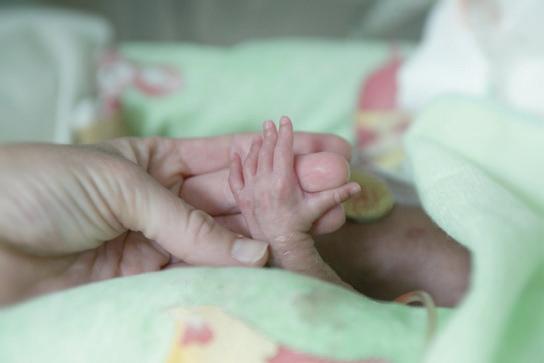
Perinatal death is often preceded by an end-of-life decision. Dombrecht et al surveyed attitudes towards perinatal end-of-life decisions among neonatologists and neonatal nurses in all eight neonatal intensive care units in Flanders, Belgium. 3 This showed that the majority felt that neonatal end-oflife decisions were acceptable, even when they fell outside the law. The same views were expressed about late pregnancy terminations if the foetus had severe problems. In a letter to the editor, Friedel et al 4 point out that the French-speaking part of the country was not included in the study.
E ARLY BIRTH WA S A KE Y FAC TOR IN THE EDUC ATIONAL DISADVANTAGES FACED BY T WINS

Most of the educational disadvantages experienced by a cohort of twins, compared with singletons, were due to shorter gestational age, and it was also partly associated with poor foetal growth. These findings from an Australian data linkage study have prompted the authors to support efforts to prolong the gestation of twin pregnancies. 5
EUROPE AN NEONATAL UNITS SHOWED VARIATIONS IN PRETERM STABILISATION AND C AFFEINE PR AC TICES
Belkhatir et al compared how very low-birthweight preterm infants were treated in two neonatal intensive care units: one in Germany and the other in the UK. 6 They found that the timing of primary intubation and caffeine therapy differed significantly between the centres. However, earlier treatment in the UK centre was not associated with a changed incidence of bronchopulmonary dysplasia. In the accompanying editorial, Johansson et al address the possible risks and harms of early treatment with caffeine therapy in preterm infants. 7

Figures 1: Linnér and Almgren 1 ; 2-5: istockphoto.com
HAN ER IVRIG ETTER Å LÆRE SEG NYE TING. GI HAN HJELPEN HAN TRENGER.


For å kunne utvikles og ta del i alt man skal lære seg i livet, må man få i seg den næring man trenger. Da er smaken viktig! MiniMax® er basert på ekte økologisk melk og fløte og gir barnet et næringsmessig fullverdig innhold med gode smaker av sjokolade, jordbær og banan/aprikos.


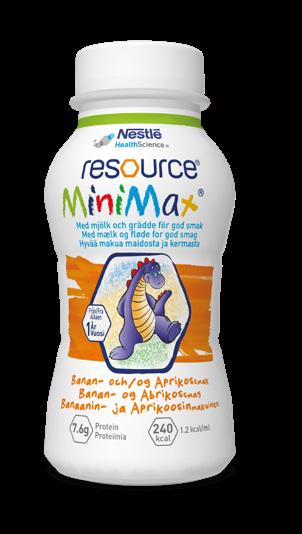

MED ØKOLOGISK MELK OG FLØTE
DET SKAL VÆRE GODT Å VOKSE OPP
Resource® MiniMax® er et næringsmiddel til spesielle medisinske formål og skal brukes under medisinsk tilsyn. Til barn med økt energibehov, underernæring eller med risiko for underernæring eller hemmet vekst. Egnet som eneste næringskilde eller kosttilegg fra 1 års alder.
PALIVIZUMAB
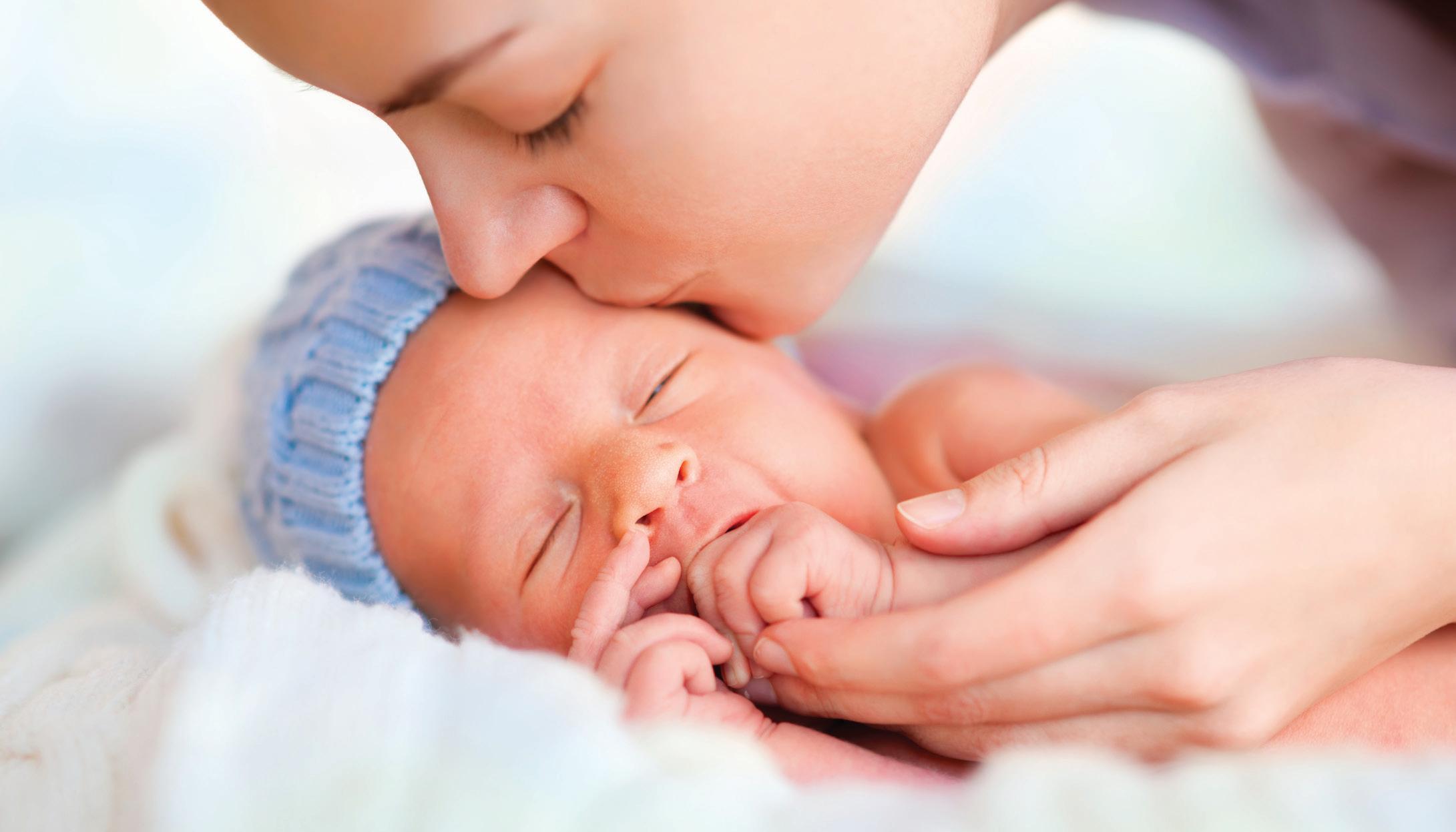
Effektiv RSV-profylakse 1 INJEKSJONSVÆSKE
Synagis – Sikkerhetsinformasjon og refusjon 1,2 Kontraindikasjoner Overfølsomhet for innholdsstoffene eller for andre humaniserte monoklonale antistoffer Alvorlige bivirkninger Anafylaksi og andre akutte overfølsomhetsreaksjoner

Vanlige bivirkninger Refusjon Feber, utslett og reaksjon på injeksjonsstedet Det kan søkes individuell refusjon. Synagis har ikke forhåndsgodkjent refusjon
Synagis ® AbbVie
Immunglobulin mot respiratorisk syncytialvirus.
C INJEKSJONSVÆSKE, oppløsning 50 mg/0,5 ml: 0,5 ml inneh.: Palivizumab 50 mg, histidin, glysin, vann til injeksjonsvæsker. INJEKSJONSVÆSKE, oppløsning 100 mg/1 ml: 1 ml inneh.: Palivizumab 100 mg, histidin, glysin, vann til injeksjonsvæsker. Indikasjoner: Forebygging av alvorlige nedre luftveisinfeksjoner som krever sykehusinnleggelse forår saket av respiratorisk syncytialvirus (RS-virus) hos barn med stor risiko for RS-virussykdom: Barn født i 35. svangerskapsuke eller tidligere <6 måneder i begynnelsen av RS-virussesongen, barn <2 år som har hatt behov for behandling for bronkopulmonal dysplasi i løpet av de siste 6 måneder, barn <2 år med medfødt hjertesykdom som er av hemodynamisk betydning. Dosering: Mht. sporbarhet skal preparat navn og batchnr. noteres i pasientjournalen. Anbefalt dosering er palivizumab 15 mg/kg kroppsvekt 1 gang i måneden i perioder med forventet RS-virusrisiko i befolkningen. Volum av tilberedt palivizumaboppløsning (ml) som skal administreres 1 gang pr. måned = [pasientvekt i kg] × 0,15. Når det er mulig, bør 1. dose gis før starten på RS-virussesongen. De påfølgende doser bør gis hver måned gjennom hele RS-virussesongen. Det anbefales at barn som er sykehusinnlagt med RS-virus og som får palivizumab, fortsetter med å få månedlige doser i hele RS-virussesongens varighet. For barn som har gjennomgått koronar-bypassoperasjon anbefales en injeksjon av 15 mg/kg kroppsvekt så snart barnet er stabilt etter inngrepet. Påfølgende doser bør fortsette månedlig gjennom resten av RS-virussesongen for barn som fortsatt har høy RS-virusrisiko. Injeksjonsvolum >1 ml bør fordeles på flere doser. Effekten ved andre doser enn 15 mg/kg, eller ved annen dosering enn månedlig i hele RS-virussesongen, er ikke fastslått. Tilberedning/Håndtering: Hetteglass uten konserveringsmiddel klar til bruk (engangsbruk). Skal ikke fortynnes. Skal ikke ristes. Både 0,5 ml og 1 ml hetteglass inneholder et overskudd som tillater opptrek king av hhv. 50 mg og 100 mg. Fjern klaffen til korken på hetteglasset og gummiproppen rengjøres med 70% etanol eller tilsv. Deretter trekkes opp passende volum av oppløsningen i sprøyten. Dosen skal gis rett etter at den er opptrukket i sprøyten. Se for øvrig pakningsvedlegg. Administrering: Gis i.m., helst anterolateralt i låret, ved bruk av standard aseptisk teknikk. Glutealmuskelen bør ikke rutinemessig brukes som injeksjonssted pga. risiko for skade på isjiasnerven. Injeksjonsvolum >1 ml bør fordeles på flere doser. Kontraindikasjoner: Overfølsomhet for innholdsstoffene eller for andre humaniserte monoklonale antistoffer. Forsiktighetsregler: Allergiske reaksjoner inkl. svært sjeldne tilfeller av anafylaksi, anafylaktisk sjokk og dødsfall er rapportert. Medikamenter til behandling av allergiske reaksjoner bør være tilgjengelig for umiddelbar bruk ved administrering. En moderat til alvorlig akutt infeksjon eller febril sykdom kan berettige utsettelse av bruken, med mindre utsettelsen utgjør en større risiko. En lett febril sykdom som mild øvre luftveisinfeksjon, er normalt ikke grunn for utsettelse av palivizumab. Gis med forsiktighet ved trombocytopeni eller annen koagulasjonsforstyrrelse. Interaksjoner: For utfyllende ATC-nr.: J06B B16 informasjon fra Legemiddelverket om relevante interaksjoner, se J06B B16 Palivizumab forventes ikke å interferere med immunresponsen på vaksiner. Palivizumab kan forstyrre immunbaserte RS-virusdiagnostiske tester, f.eks. noen antigenpåvisningsbaserte analyser. Palivizumab hemmer virusreplikasjon i cellekultur og kan forstyrre virale cellekulturanalyser. Palivizumab forstyrrer ikke reverstranskriptase polymerasekjedereaksjonsbaserte analyser. Analyseforstyrrelser kan føre til falske negative RS-virusdiagnostiske testresultater. Diagnostiske testresultater bør derfor brukes sammen med kliniske funn for å veilede medisinske beslutninger. Graviditet, amming og fertilitet: Ikke relevant pga. ikke indisert til bruk hos voksne. Bivirkninger: Mest alvorlig er anafylaktisk reaksjon og andre akutte overfølsomhetsreaksjoner. Svært vanlige: Generelle: Feber. Hud: Utslett. Vanlige: Generelle: Reaksjon på injeksjonsstedet. Luftveier: Apné 1 . Mindre vanlige: Blod/lymfe: Trombocytopeni1. Hud: Urticaria 1 . Nevrologiske: Krampeanfall 1 . Ukjent frekvens: Immunsystemet: Anafylaktisk reaksjon, anafylaktisk sjokk (dødsfall er sett i noen tilfeller) 1 . Luftveier: Liten økt astmafrekvens hos premature (uklar årsakssammenheng) 1 . 1. Identifisert fra overvåkning etter markedsføring. Overdosering/Forgiftning: En dose på 22,27 mg/kg til ett barn har ikke vist medisinske følger. Doser opptil 85 mg/kg er rapportert, og i noen tilfeller ble bivirkninger rapportert tilsvarende de observert for doser >15 mg/kg. Behandling: Pasienten overvåkes for tegn eller symptomer på bivirkninger, og hensiktsmessig symptomatisk behandling settes i gang umiddelbart. Egenskaper: Klassifisering: Palivizumab er et humanisert IgG1k monoklonalt antistoff rettet mot en epitop på det A-antigene setet på fusjonsproteinet til respiratorisk syncytialvirus (RS-virus), og er sammensatt av humane (95%) og murine (5%) antistoffsekvenser. Palivizumab har potent nøytraliserende og fusjonshemmende aktivitet mot både RS-virus type A og B. Absorpsjon: Månedlige intramuskulære doser på 15 mg/kg gir etter ca. 30 dagers bruk, laveste serumkonsentrasjoner på ca. 40 μg/ml etter 1. injeksjon, ca. 60 μg/ml etter 2. injeksjon og ca. 70 μg/ml etter 3. og 4. injeksjon. Fordeling: Vd ca. 57 ml/kg . Halveringstid: Ca. 20 dager hos barn. Oppbevaring og holdbarhet: Oppbevares i kjøleskap ved 2-8°C. Skal ikke fryses. Oppbevares i originalemballasjen for å beskytte mot lys. Skal gis rett etter at dosen er opptrukket i sprøyten. Pakninger og priser: Injeksjonsvæske, oppløsning: 50 mg/0,5 ml, 0,5 ml (hettegl.) kr 5412,30. Injeksjonsvæske, oppløsning: 100 mg/1 ml, 1 ml (hettegl.) kr 9160,50. Refusjon: Synagis har ikke forhåndsgodkjent refusjon. Det kan søkes individuell refusjon. For informasjon om individuell stønad, se helfo. no. Sist endret: 05.12.2019 (priser og ev. refusjon oppdateres hver 14. dag). Basert på SPC godkjent av SLV/EMA: 14.11.2019. For siste oppdaterte pris se Felleskatalogen.no Referanser: 1. Synagis SPC avsnitt 4.3, 4.8 og 5.1 sist oppdatert 14.11.2019. 2. For informasjon om individuell stønad, se helfo.no.










